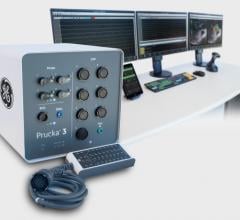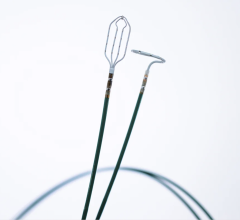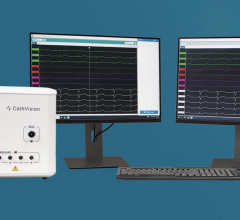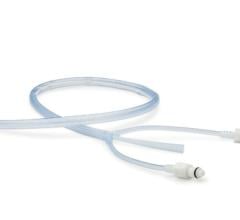April 13, 2011 – Physician-researchers from the cardiac center at The Children’s Hospital of Philadelphia presented new findings on pediatric cardiovascular disease at the American College of Cardiology’s 60th Annual Scientific Sessions in New Orleans. During abstract presentations, they described side effects of the Fontan procedure, scarring during staged palliation and arrhythmia recurrence after heart surgery.
Children’s Hospital clinicians also participated as moderators during sessions, participated on expert panels and symposiums and shared knowledge on treating adults with congenital heart disease. Below are summaries of some of the research presented at the abstract sessions.
Single Center Reports Early Mortality after Fontan Operation Has Now Fallen to 1 Percent
Over the past 2 decades, changes in management of infants with single ventricle heart defects have resulted in increasing numbers of children undergoing the Fontan operation. The researchers reported early outcomes for children undergoing this procedure from 2005 to 2009 at The Children’s Hospital of Philadelphia and compared those outcomes to those of previously published cohorts from the same center (1992-2004). In the retrospective review, from 1992 to 2009, 771 patients underwent a Fontan procedure, including 279 from 2005 to 2009. Of those patients, mortality has declined over time and in the current era is just over one percent. Practice patterns have also evolved with Fontan completion at an older age and greater use of extra-cardiac conduit.
Fontan Type or Patient Age at Time of Procedure Does Not Predict Post-Operative Arrhythmias
Post-operative arrhythmias increase the risk of morbidity and mortality after the Fontan operation. The extracardiac conduit (ECC) modification of the Fontan has been theorized to reduce the risk of sinus node dysfunction and atrial arrhythmia, compared to the intra-arterial lateral tunnel (IALT) Fontan. This single-center study compared the prevalence of late arrhythmias and need for pacemaker therapy in ECC Fontan patients to IALT Fontan patients. A retrospective review analyzed 83 ECC patients and 108 IALT patients who underwent surgery at The Children’s Hospital of Philadelphia from 1995 to 2005, and who received long-term follow-up at the same institution. The prevalence of late post-operative arrhythmias was found to be lower than previously published. In addition, duration of follow-up was the only independent predictor of arrhythmia and need for pacemaker therapy, not Fontan type or the patient’s age when the Fontan was performed.
Infants with PSVT and Shorter Hospital Stay May Have Higher Risk of Arrhythmia Recurrence
Even with appropriate medical therapy, infants with paroxysmal supraventricular tachycardia (PSVT) have a risk of arrhythmia recurrence after hospital discharge. SVT episodes may be hard to detect at home, and infants are at greater risk of prolonged SVT episodes than older children who can communicate symptoms. The researchers performed a chart review of 144 infants with PSVT, of whom 35 children had documented recurrence in the first year of life. Three patients experienced shock from prolonged tachycardia and experienced a full recovery, and five patients died from complications related to congenital heart and birth defects. Infants spending less than 72 hours in the hospital after initial diagnosis had significantly higher recurrence than those monitored for more than 72 hours. Though SVT recurrence after hospital discharge is not uncommon, it is associated with a low morbidity and mortality. Infants with short hospital stays may have a higher risk of out-of-hospital recurrence.
Staged Palliative Surgery Remains Option for Single Ventricle Patients with Ventricular Dysfunction
In patients with single ventricle heart defects, ventricular dysfunction is a risk factor for mortality. Some advocate transplantation rather than additional staged palliation but outcomes in this high-risk group prior to superior cavopulmonary connection have not been previously reported. Over the course of 4 years, 213 patients underwent superior cavopulmonary connection (SCPC), of whom 19 met inclusion criteria (at least moderate subjective ventricular dysfunction, as assessed by echocardiogram). Eighteen of the patients had hypoplastic left heart syndrome and one had single ventricle with pulmonary stenosis. Significant ventricular dysfunction as assessed by echocardiography occurs infrequently in single ventricle patients presenting for SCPC. All patients with ventricular dysfunction had a morphologic right ventricle. Ventricular performance improved slightly in more than half the patients and despite significant ventricular dysfunction, midterm survival and post-operative morbidity were comparable to prior reports. This suggests that such patients remain candidates for staged palliation.
Hepatic Fibrosis in Fontan Patients Correlates with Preoperative Morbidity; Merits Further Study
Hepatic fibrosis has emerged as an important long-term sequela following the Fontan operation. Prior reports describe predominantly centrilobular, sinusoidal fibrosis in these patients. This retrospective review analyzed 22 patients with Fontan circulation who died and had complete autopsy between 1980 and 2009. Sixteen had hypoplastic left heart syndrome and 15 had undergone a lateral tunnel Fontan. The median interval between Fontan and death was 20 days. Portal fibrosis was commonly observed; sinusoidal fibrosis was less common. Of the 14 patients who died within one month of Fontan, most showed some evidence of portal fibrosis, and the degree of portal fibrosis was significantly associated with markers of pre-Fontan morbidity. Portal fibrosis in this population has not been previously recognized, and the incidence and etiology of portal fibrosis after Fontan require further investigation.
Myocardial Scarring Has Little Effect on Function in Single Ventricle Patients after Surgery
Single ventricle patients undergoing staged surgical reconstruction undergo multiple procedures, may have coronary abnormalities and are at an energy-flow disadvantage which may lead to myocardial scarring. In a retrospective review, over a 5-year period, 176 single ventricle patients underwent cardiac MRI scans for scarring and ventricular function. Single ventricle patients demonstrate scar throughout staged surgical reconstruction, increasing in incidence from stage 2 (bidirectional Glenn/HemiFontan) to stage 3 (Fontan); there was no increased scar in Fontan from the teen years compared with adulthood. Scar was even present in patients at Stage I. The presence of scar was associated with clinical symptomatology. The presence of scar can be associated with clinical issues but it appears to affect function minimally.
For more information: www.chop.edu


 February 02, 2024
February 02, 2024 








